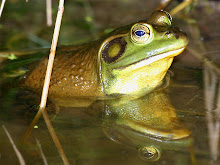Scorpions have long been of interest to humans primarily because of their ability to give painful and sometimes life threatening stings. Scorpions are also an important and beneficial component of many ecosystems and they are one of the oldest known terrestrial arthropods. Fossil scorpions found in Paleozoic strata 430 million years old appear very similar to present day species.
Scorpions are venomous arthropods in the class Arachnida, relatives of spiders, mites, ticks, solpugids, pseudoscorpions and others. There are currently 1400 recognized species of scorpions worldwide. Scorpions have an elongated body and a segmented tail that is tipped with a venomous stinger. They have four pairs of legs and pedipalps with plier-like pincers on the end, which are used for grasping.
Scorpions are commonly thought of as desert animals, but in fact, they occur in many other habitats, including grasslands and savannahs, deciduous forests, montane pine forests, intertidal zones, rain forest and caves. Scorpions have even been found under snow-covered rocks at elevations of over 12,000 feet in the Himalayas of Asia.
As arachnids, scorpions have mouthparts called chelicerae, a pair of pedipalps, and four pairs of legs. The pincer-like pedipalps are used primarily for prey capture and defense, but are also covered with various types of sensory hairs. The body is divided into two main regions, a cephalothorax and an abdomen. The cephalothorax is covered above by a carapace (or head shield) that usually bears a pair of median eyes and 2 to 5 pairs of lateral eyes at its front corners (a few cave and litter-dwelling scorpions are completely eyeless).
The abdomen consists of 12 distinct segments, with the last five forming the metasoma what most people refer to as the "tail". At the end of the abdomen is the telson, which is a bulb-shaped structure containing the venom glands and a sharp, curved stinger to deliver venom.
On its underside, the scorpion bears a pair of unique comb-like sense organs called the pectines; these are usually larger and bear more teeth in the male and are used to sense the texture and vibration of surfaces. They also serve as chemoreceptors (chemical sensors) to detect pheromones (communication chemicals).
The "long-tailed" African Scorpion (Hadogenes troglodytes) reaches a length of over 8 inches, and is probably the longest scorpion in the world. Some of the African and Asian Emperor Scorpions routinely reach (and probably exceed) 7 inches. The largest scorpions in the United States are members of the genus Hadrurus (giant desert hairy scorpions), obtaining a length of about 5 inches. Giant desert hairy scorpions also occur in Arizona

No comments:
Post a Comment